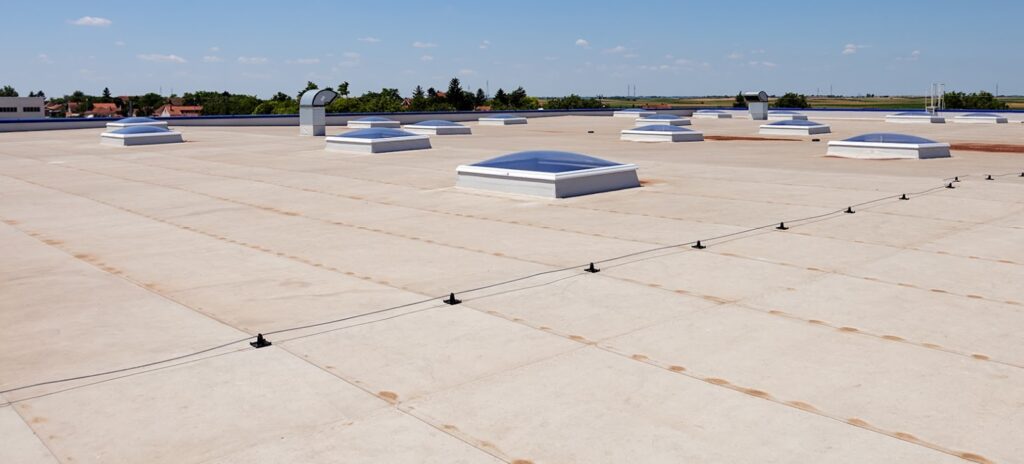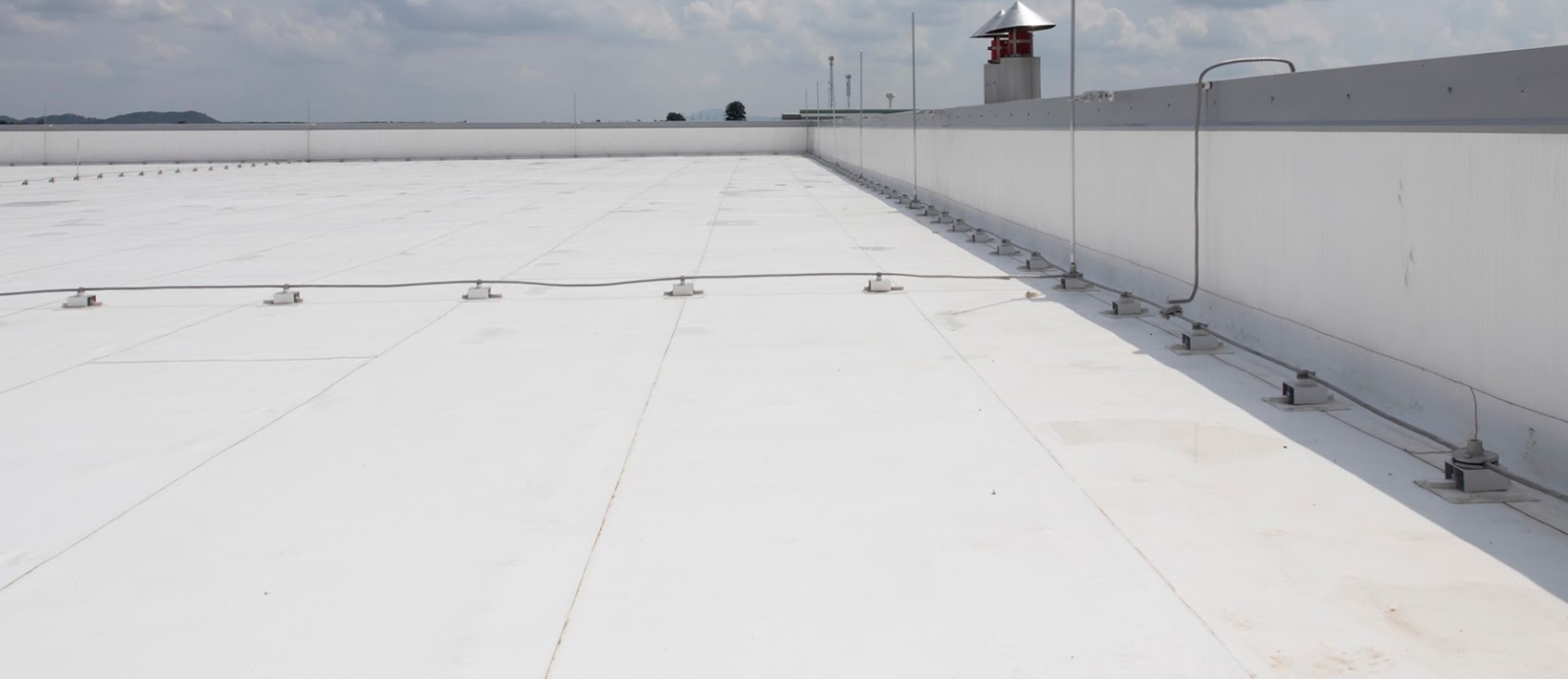Let’s be honest—flat roofs don’t usually command a lot of attention, especially when they’re doing what they’re supposed to. For many property owners and building managers, if the roof isn’t actively leaking, it’s out of sight and out of mind.
But here’s the thing: when a commercial flat roof does have a problem, it rarely stays small for long. And too often, those problems start in the same few trouble spots again and again.
At Old Line Homes, we’ve worked with businesses across Bel Air and beyond, helping them catch roof issues before they turn into budget-busting emergencies. We’ve seen firsthand how a bit of knowledge and routine care can go a long way in protecting your building, your assets, and your peace of mind.
In this post, we’ll break down the most common problem areas you’ll find on commercial flat roofs, why they matter, and how regular maintenance can help you stay ahead of costly repairs.
Why Flat Roofs Are Prone to Problems
A Little Water Can Cause a Lot of Trouble
Unlike pitched roofs that naturally send water down and away, flat roofs have to work to drain water. Even a minor dip or blocked drain can lead to pooling, and standing water is no friend to a long-lasting roof.
Throw in Maryland’s freeze-thaw cycles, summer heat, and the occasional thunderstorm, and it’s easy to see why commercial roofs in Bel Air are under constant stress.
The good news? Most of the issues that pop up happen in predictable places—and once you know what to look for, it’s easier to stop problems before they start.
1. Drainage Systems
When the Water Has Nowhere to Go
If your roof collects water after a rainstorm and it sticks around longer than it should, you’ve got a drainage issue. Whether it’s clogged scuppers, overflowing gutters, or a sagging section of the roof that’s lost its slope, ponding water is a red flag.
It might not cause damage overnight, but left alone, it can weaken your roof membrane and increase the risk of leaks, mold, or even structural damage.
What We Do: At Old Line Homes, we make sure drains and gutters are clear and that the roof is pitched properly to allow water to flow off quickly. If needed, we can recommend simple fixes like tapered insulation to correct the slope.
2. Membrane Seams and Edges
Where Materials Meet, Moisture Finds a Way
On most flat roofs, large sheets of material—like TPO, EPDM, or modified bitumen—are sealed together to form a waterproof surface. Over time, these seams can weaken, pull apart, or blister from sun exposure and fluctuating temperatures.
Once water finds its way between layers, it doesn’t just sit—it spreads. And because the damage happens below the surface, it often goes unnoticed until something inside your building gets wet.
What We Do: During maintenance visits, we examine seams and edges closely for signs of separation, bubbling, or wear. We’ll reseal or repair these areas before they turn into full-blown leaks.
3. Flashing and Roof Penetrations
The Usual Suspects for Leaks
Anywhere your roof has a vent, HVAC unit, skylight, or pipe is a natural weak spot. These “penetrations” require flashing—special waterproof material—to seal them in. But flashing ages just like everything else, and it’s especially prone to pulling away or cracking with temperature changes.
If flashing fails, water can sneak in and do serious damage right where you don’t want it—behind walls, inside ceilings, or around sensitive equipment.
What We Do: We check every penetration and piece of flashing during inspections, resealing and replacing where needed. It’s a small step that makes a big difference in leak prevention.

4. Blistering and Bubbles
A Sign Something’s Brewing Below the Surface
Blisters and bubbles in the roof surface often mean that air or moisture has gotten trapped between layers. This can be the result of poor installation, aging materials, or a sign that water is already working its way through the system.
While they might look harmless at first, these spots compromise your roof’s integrity and can quickly lead to bigger problems.
What We Do: Depending on the size and severity, we can patch or remove damaged areas and reinforce the membrane to keep your roof watertight.
5. UV and Weather Exposure
Maryland’s Climate Is No Joke
Flat roofs take the full brunt of every sunny day, icy night, and wind-blown storm. Over time, UV rays can cause roofing materials to dry out, crack, or lose flexibility—especially in older roofs that haven’t been maintained.
And let’s not forget those big Maryland temperature swings. Going from 25°F to 60°F in a day may confuse your wardrobe, but it really confuses your roof materials.
What We Do: We inspect for early signs of weather-related wear and offer roof coating options that can extend the life of your system. These coatings reflect UV, improve energy efficiency, and delay the need for full replacement.
6. Quick Fixes and Poor Repairs
A Temporary Patch Can Be a Permanent Problem
Not all repairs are created equal. A rushed fix or incompatible material might solve the issue for a week or two—but it could end up causing more damage in the long run, voiding your warranty, or making future repairs more expensive.
What We Do: At Old Line Homes, we repair each issue using materials that match your existing roof system and follow manufacturer specs. That means your warranty stays valid, and your fix stays fixed.
How Old Line Homes Keeps Flat Roofs in Great Shape
We know commercial property owners are juggling a lot—tenants, utilities, budgets, maintenance logs. That’s why we’ve designed our roofing services to be clear, helpful, and hassle-free.
When you work with Old Line Homes, you get:
- Scheduled inspections that fit your calendar
- Detailed reports with photos and straightforward recommendations
- Honest advice based on what’s best for your building—not our bottom line
- Skilled crews trained in all major commercial roof systems
- Help staying compliant with warranty and insurance documentation
- Fast response if a problem does come up
Our goal isn’t just to fix roofs—it’s to make life easier for the people who rely on them.
Let’s Catch Small Problems Before They Become Big Ones
Understanding the common trouble spots on commercial flat roofs is the first step toward better protection for your building. But the next step is just as important—taking action before problems grow.
If it’s been a while since your last inspection, or if you’re not quite sure what condition your roof is in, we’d be happy to take a look. Our team will walk your roof, answer your questions, and give you a clear plan for moving forward—no pressure, just real information.
Call Old Line Homes or email [email protected] to schedule your commercial roof check-up. Because the best time to fix a roofing issue is before it becomes a problem—and we’re here to help you do exactly that.

